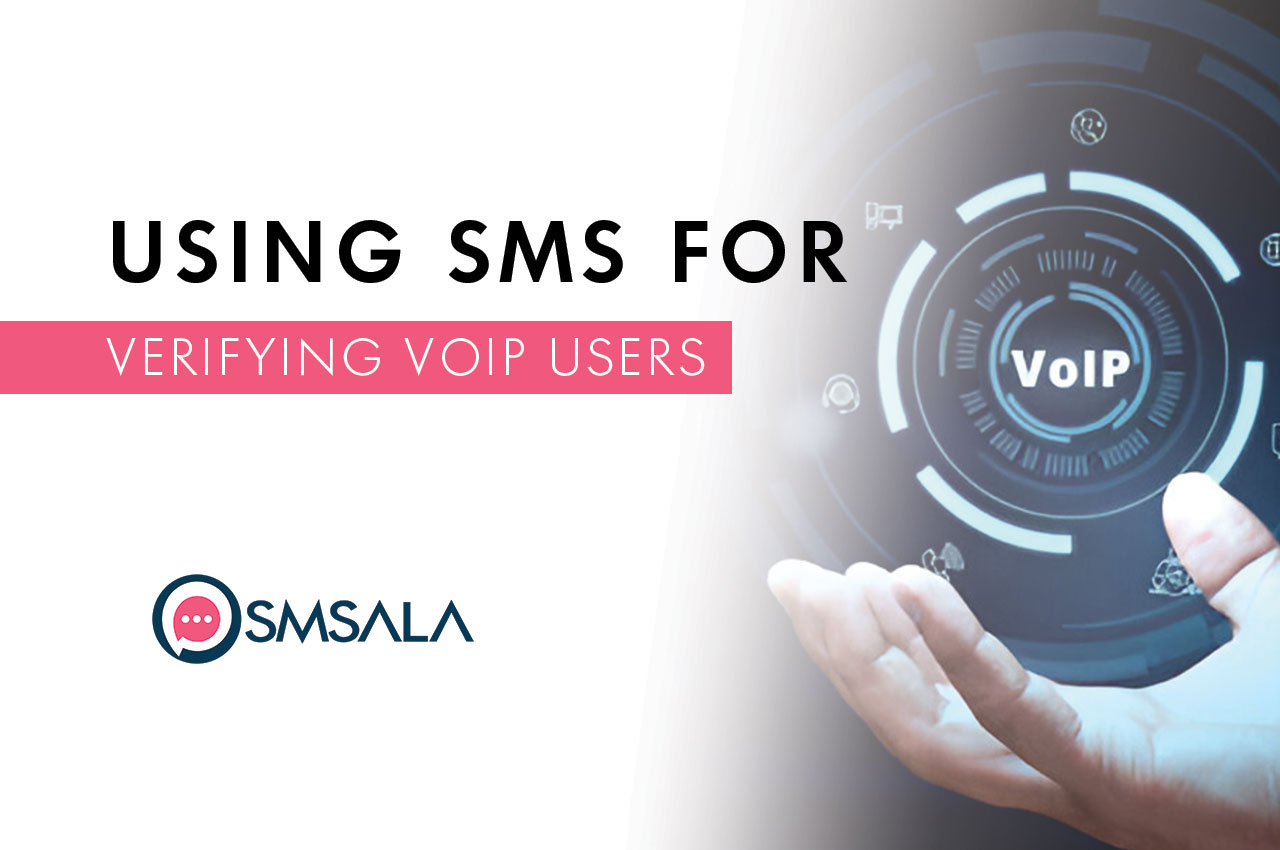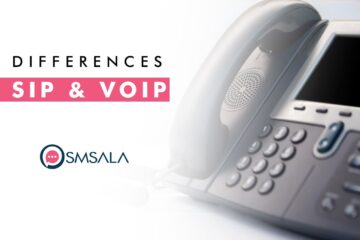In an era where digital communication is critical for businesses, Voice over Internet Protocol (VoIP) has revolutionized how we communicate by allowing voice calls to be made via the internet. But with this transformation comes a significant concern: security. As cybercriminals become increasingly sophisticated, businesses must ensure that their VoIP systems are secure and that only authorized users have access. One of the most effective ways to secure VoIP systems is through SMS-based verification.

This article explores the benefits of using SMS for verifying VoIP users, highlighting how it enhances security, improves user experience, and safeguards VoIP communication. Additionally, we’ll dive into the best practices for implementing SMS verification, offer real-world examples, and explain how businesses can future-proof their VoIP systems with this technology.
What is VoIP, and Why is Security Important?
VoIP, or Voice over Internet Protocol, enables businesses to make voice calls over the internet instead of traditional phone lines. This technology is a game-changer for companies, offering cost savings, flexibility, and scalability that conventional phone systems can’t match.
However, while VoIP opens new doors for communication, it also introduces risks. Since VoIP uses the internet, it becomes vulnerable to cyber threats, including hacking, unauthorized access, and fraud. Imagine a scenario where an unauthorized user gains access to a company’s VoIP system—this could lead to data breaches, financial losses, and reputation damage.
Ensuring that only verified users can access VoIP systems is crucial, and this is where SMS-based verification comes into play. By adding a second layer of security through two-factor authentication (2FA), businesses can effectively safeguard their VoIP communication.
Understanding SMS Verification for VoIP Users
SMS verification works by sending a one-time password (OTP) via SMS to a user’s registered phone number when they attempt to access the VoIP system. The user must then enter the OTP to complete the authentication process. This method ensures that even if someone has stolen login credentials, they cannot access the VoIP system without the one-time password sent to the authorized user’s mobile device.
How SMS Verification Works:
- User login attempt: The user enters their username and password on the VoIP system.
- OTP generation: The system generates a one-time password and sends it via SMS to the user’s mobile number.
- OTP input: The user enters the OTP into the VoIP system.
- Access granted: If the OTP is correct, the system grants the user access.
This method leverages the ubiquity of mobile phones to provide an additional layer of security, ensuring that unauthorized users cannot access the VoIP system without physical access to the verified user’s phone.
Key Benefits of Using SMS for Verifying VoIP Users
Now that we understand how SMS verification works, let’s explore the key benefits of using SMS for verifying VoIP users:
1. Enhanced Security
Security is the primary reason businesses opt for SMS verification. Traditional passwords are no longer enough to protect digital systems, as they can be easily stolen or hacked. With SMS verification, even if a malicious actor gains access to login credentials, they cannot access the system without the OTP sent to the user’s phone.
By using SMS verification as a two-factor authentication (2FA) method, businesses can reduce the risk of unauthorized access to their VoIP systems, thus protecting sensitive data and communication.
Real-World Example: A financial services firm uses VoIP for internal communications. To ensure that only verified employees access the system, they implement SMS-based 2FA. This adds an extra layer of security to their communications, making it nearly impossible for hackers to infiltrate the system without access to employees’ mobile phones.
2. Simplicity and Ease of Use
Unlike other verification methods such as email or app-based authentication, SMS verification is simple and easy to use. Most users are already familiar with receiving SMS messages, making the verification process straightforward.
This ease of use reduces the friction in the authentication process, ensuring that users are not overwhelmed with complicated verification steps. SMS verification offers a user-friendly experience, which is crucial for businesses that want to ensure security without compromising usability.
Tip: Always opt for a verification method that minimizes friction while maintaining a high level of security.
3. Cost-Effective Solution
SMS verification is a cost-effective way to secure your VoIP system compared to other security measures such as hardware tokens or biometric verification. Businesses can easily integrate SMS-based verification without significant investment in infrastructure or software.
Additionally, because SMS is universally accessible, businesses do not need to worry about compatibility issues or user adoption. This makes SMS verification an affordable solution for small and large businesses alike.
4. Global Reach and Accessibility
One of the greatest advantages of using SMS for verification is its global reach. SMS can be received on virtually any mobile device, making it an ideal solution for businesses with a global workforce or customer base. Unlike email or app-based authentication, which may require internet access, SMS works even in areas with limited connectivity.
This wide accessibility makes SMS verification an effective method for ensuring secure access to VoIP systems regardless of geographic location.
Pro Tip: Ensure that your SMS verification system works seamlessly across different regions to maximize its reach and effectiveness.
How SMS Improves User Experience in VoIP Authentication
A critical aspect of implementing any security measure is ensuring that it doesn’t negatively impact the user experience. Fortunately, SMS verification strikes the right balance between security and ease of use. Here’s how SMS improves the user experience in VoIP authentication:
1. Reduced Login Friction
One of the most common complaints about multi-factor authentication is the additional step it adds to the login process. However, SMS verification simplifies this step by providing users with a quick, familiar process to authenticate their identity.
Instead of navigating complex authentication apps or receiving emails that may end up in spam folders, users receive a simple one-time password directly to their phones. This reduces login friction and ensures that users can access the VoIP system quickly and securely.
2. Faster Access for Time-Sensitive Communication
In industries where time-sensitive communication is critical—such as healthcare, finance, and logistics—speed is paramount. SMS verification allows users to gain access to VoIP systems swiftly, ensuring that important calls and communications are not delayed by lengthy authentication processes.
By streamlining the verification process, businesses can maintain a fast, secure communication system without sacrificing usability.
Best Practices for Implementing SMS Verification in VoIP Systems
To maximize the benefits of SMS verification for VoIP, it’s important to follow best practices when implementing this technology. Here are some key considerations:
1. Choose a Reliable SMS Aggregator
An SMS aggregator ensures that verification messages are delivered reliably and quickly. It’s important to partner with a reputable aggregator that can handle high volumes of SMS messages and provide reliable global delivery.
Tip: Look for aggregators that offer delivery tracking and real-time reporting to monitor the success of your verification messages.
2. Ensure Compliance with Data Protection Laws
SMS verification involves the transmission of sensitive data, so it’s crucial to comply with data protection regulations such as GDPR in Europe and CCPA in California. These regulations require businesses to protect user data and provide transparency regarding how personal information is used.
Ensure that your SMS verification process is fully compliant with these regulations to avoid potential fines and reputational damage.
3. Provide Backup Authentication Methods
While SMS verification is effective, some users may not have access to their mobile phones due to loss, damage, or network issues. To mitigate this risk, it’s essential to provide backup authentication methods, such as email or app-based verification.
This ensures that users can still access the VoIP system even if they cannot receive SMS messages.
The Future of VoIP Security with SMS Verification
As businesses increasingly rely on VoIP technology for communication, the need for secure and reliable authentication methods will continue to grow. SMS verification is likely to remain a cornerstone of VoIP security, but new developments in multi-factor authentication (MFA) and biometric verification may further enhance security in the future.
1. Integration with Multi-Factor Authentication (MFA)
Many businesses are moving beyond two-factor authentication (2FA) to adopt multi-factor authentication (MFA), which combines multiple layers of verification. SMS verification can be used alongside other authentication methods—such as biometrics or app-based authentication—to provide an even higher level of security.
By integrating SMS verification with MFA, businesses can future-proof their VoIP systems and stay ahead of evolving cyber threats.
2. Leveraging AI for Real-Time Fraud Detection
As artificial intelligence (AI) continues to advance, businesses can use AI-driven systems to detect fraudulent login attempts in real-time. These systems can work alongside SMS verification to analyze login patterns, detect anomalies, and prevent unauthorized access before it happens.
Incorporating AI into VoIP security can further enhance the effectiveness of SMS verification, providing an extra layer of protection against fraud.
FAQs About SMS Verification for VoIP Users
1. Why is SMS verification important for VoIP users?
SMS verification adds an extra layer of security to VoIP systems, ensuring that only authorized users can access the system. It prevents unauthorized access by requiring a one-time password (OTP) sent via SMS in addition to a regular password.
2. Is SMS a secure method for VoIP verification?
Yes, SMS verification is a widely used and secure method for verifying VoIP users. It ensures that even if login credentials are compromised, unauthorized users cannot access the system without the OTP sent to the authorized user’s phone.
3. Can SMS verification be used in conjunction with other methods like email or app-based verification?
Yes, many businesses use SMS verification as part of a multi-factor authentication (MFA) system, combining it with other verification methods like email or app-based authentication for added security.
4. What are the alternatives to SMS verification for VoIP?
Alternatives to SMS verification include email verification, app-based authentication, and biometric verification. Each method has its own advantages, but SMS remains one of the most reliable and accessible options.
5. How do I set up SMS verification for my VoIP system?
To set up SMS verification, you’ll need to integrate an SMS API with your VoIP system and partner with a reliable SMS aggregator to handle message delivery. Additionally, ensure that your system complies with data protection regulations.
Conclusion: Strengthen Your VoIP System with SMS Verification
The benefits of using SMS for verifying VoIP users are clear. It enhances security, improves user experience, and provides a cost-effective solution for safeguarding VoIP communication. As cyber threats continue to evolve, businesses must adopt secure authentication methods to protect their systems and users.
If you’re looking to improve the security of your VoIP system, SMS verification is a powerful and accessible tool to ensure that only authorized users can access your communication platform. Implement this technology today and take the first step toward a more secure, efficient VoIP system.
Ready to enhance your VoIP security? Contact us to learn how you can implement SMS verification and protect your business from unauthorized access.



